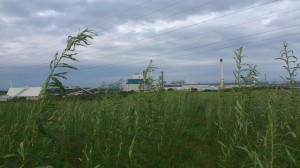CAP reform consultation: Response from a broad coalition supporting SRC and the energy crops sector
Crops for Energy Ltd has sought to engage with likeminded individuals and organisations in order to respond to the CAP reform consultation and demonstrate the potential value of continued but more targeted support for the energy crops sector.
Our view is that woody energy crops in general and short rotation coppice (SRC) willow in particular are multi-functional environmental crops – they do much more than just produce an energy resource and could have a major economic and environmental impact. Rather than being marginalised by the current CAP reforms these crops should be at the very centre of the next Rural Development Programme for England.
You can read our full response here: SRC coalition CAP reform response
We are particularly pleased to see the specific inclusion of SRC in the Ecological Focus Areas (EFA). We believe that SRC willow is an ideal crop to grow in EFAs and on other farmland. The inclusion is justified by the wide range of environmental and social benefits that this crop can bring to farms and rural situations. These include:
- Rapid production of biomass fuel
- Increase in farm biodiversity
- Abundant supply of pollen and nectar for bees
- Flood mitigation
- Improvements in water quality
- Carbon sequestration
- Improvement in local air quality
- Rehabilitation of contaminated land
- Control of soil erosion
- Biosecurity barriers
- Shelterbelts and windbreaks
Other crop options can deliver some of these benefits but only SRC willow can provide this full package. It is important that planting of SRC in EFAs takes operational requirements into account. To be effective as an EFA measure the SRC needs to be vigorous and able to be mechanically harvested. The use of new improved willow varieties is essential as is access to herbicides and insecticides during the first two years of the crop’s life.
Rural Development Funds should be targeted where they can have the maximum effect by offering multiple benefits. SRC willow is one of the few environmental crop options that also provide economic benefit through:
- Delivery of UK renewable energy targets under the EU Renewable Energy Directive
- Improving energy security and resilience of supply
- Delivery of significant greenhouse gas savings when used for power and heat applications
- Increasing rural employment opportunities
- Helping to reduce fuel poverty
Our analysis suggests that targeted planting of 20,000 hectares of energy crops plus the restoration of 75,000 hectares of undermanaged woodland could increase indigenous woodfuel stocks by 350,000 oven dry tonnes per year. On top of existing levels this would enable the UK to achieve almost 10% of the renewable heat target.
This aspiration could be achieved through several regional energy crops schemes (ECS) that are aimed at areas with specific needs. The Iggesund paperboard mill combined heat and power (CHP) plant in Cumbria, (in which £108 million has already been invested), is a project that is looking to commission locally grown SRC. The planting of 2,500 hectares of SRC could meet 10% of the plant’s annual fuel demand. This would provide upland sheep farmers with a lucrative diversification option with the potential to increase their average gross margin from £159/hectare to £647/hectare.
Some areas of England (e.g. Cornwall, west Somerset, East Anglia, north Yorkshire and Cumbria have up to 60% of properties off the gas grid and therefore local people and businesses will be paying a high price for their heating fuel. Our modelled analysis suggests that a regional ECS could produce £59 million revenue to farmers and contractors over 27 years and benefit local heat users by an average of £2.18 million per year.
The cost of a holistic regional ECS would be around £7.2 million or £2,870 per planted hectare. This is excellent value compared to trees planted under the English Woodland Grant Scheme (EWGS). The EWGS provides grant funding for 10-15 years with support ranging from £2,600 – £9,300 per planted hectare. In addition, it should be recognised that energy crops can make a rapid impact on renewable energy targets. By contrast, stands of trees planted over longer rotations will play no part in meeting our 2020 targets.
In order to maximise the benefits that energy crops can provide we need RDP funds to be made available for harvesting and processing machinery. This will help improve the economics of growing the crops, enhance the quality of woodfuel and open up more lucrative markets.

